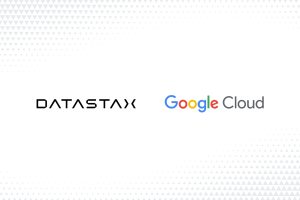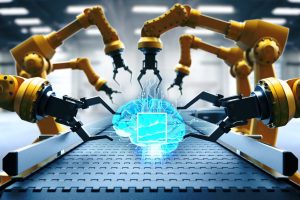Manoj Deorukhar, CIO, Sterling and Wilson talks about the digitization journey in the world’s largest EPC company.
What is the operating business model of Sterling & Wilson and how all does technology drive this business?
Sterling and Wilson is basically an EPC company. We have renewable EPC business which is Solar and we are largest company in the world in this domain. EPC stands for Engineering, procurement and construction.
After completion of projects we are still involved as maintenance and operating partner. It is a multi-division project that operates from different project sites and in India there are more than 350 project sites. The project sites are mainly in very remote locations, and so the goal for digitization is to enabling and empowering these remote sites to be the connected with us and provide us insight about what is happening at the side. Sterling & Wilson grew very rapidly in the last 5 years due to the global surge of the renewable energy field. Sterling & Wilson had that excellent engineering capability, supply chain and speedy execution which was the main cause of the growth.
What are the key technology solutions used by Sterling & Wilson and what are their use cases?
We work in 3 major spheres among which the most important one is of our client, their projects work-sites, ecosystems which include their partners, architect and project managing companies and so on. The second sphere is our suppliers, service providers and the third sphere is our internal organization which contains people’s offices and so on.
The goal of IT now is to make it possible so that all three can work together. We are using SAP for more than 20 years. Also, Microsoft got heavily utilized not only for Office365, but we have used many digital capabilities provided by Microsoft and they have worked closely with us throughout this period. For connecting with people we used MS Teams during this pandemic time and it has helped us collaborate with then both internally and externally.
How are digital technologies helping Sterling & Wilson to tide over the current COVID19 crisis?
Even before the pandemic there was a plan for digitisation and cloud adoption. For the last two years we have been pushing mobility as all of our application must have a mobile component. In the last few years we have converted many manual processes into digital processes, we invested a lot in digital collaborations tools like MS Teams. These helped us a lot when the pandemic and lockdown started.
As in other countries the lockdown started before India, our partners and colleagues from those countries could not come to office and there we saw the adoption of MS Teams increasing. Our data centres that are on cloud operated smoothly as they did not need any human intervention. We had some small problem but they were sorted as there was clear SOP with our partners with police permission the on premise challenges were fixed. We supplied laptops to our key workers when we anticipated this situation back in March. Some employees were facing some challenges thus mobility helped as they were able to work from their smart phones.
What are the key pillars of Sterling & Wilson’s digitization strategy?
The purpose of digitization for Sterling & Wilson is to enhance the experience of the three worlds we have the client experience, supplier experience and the experience of our own people. So efforts are given to improve the experience. The second very important thing is to improve the speed of our business process and the third important thing point is the visibility and insights, a large amount of data is generated from the applications and the data needs to be stored to understand what has happened yesterday what is happening today and what will happen in the future.
The last very important point is ROI, today any digital initiative has to have a business use case and returns. Cloud is going to be very important as if there is something that is not on cloud is going to impose constraints in getting the full potential of the same. Next is process orientation as digitization cannot be isolation of processes. So having an end to end process alignment will be very important.
Third will be user enablement, and lastly there should be IT security because as we digitise we are getting more exposed as we are collaborating with many more partners than what we had earlier. So here IT security takes the centre stage and without good IT security there is a lot of risk for the clients, suppliers and the organization as a whole.
How are newer technologies like AI, analytics and AR/VR, RPA or IIoT being used in Sterling & Wilson and in the engineering sector overall especially in the current situation?
IIoT needs the help of AI capabilities to create huge amounts of data and its humanly not possible to keep a track of that so we are utilising the AI enabled capabilities to track the data. In terms of the core technologies, they help us make decision automatically.
It also helps to create a capability database and run simulation for example if we have to put up a solar plant in Kalahari Desert this technology warns about the guarantee about the generation and give a forecast. This is not only for solar we can use this for other uses. It’s in our roadmap to use AI to minimise the human intervention required for accounts and manufacturing sectors in the coming years.
Not just the COVID-19 and lockdown challenges, but how can digitization help address the slowdown challenges through optimizing processes and enabling solutions to work more efficiently?
Digitization has been helped greatly by the pandemic and is now here to stay as people has understood the power of digitization. Business leaders are keen on what else can be done with this technology. Currently due to slow down the business are low but once it re-grows scaling up will be important. Digitization can cut the costs of operation to a large extent. Avoiding mistakes, optimization of man power, getting the crucial data all these can be addressed by digitization. Biggest advantage offered by digitization is improving customer experience.
The complexity of technology makes it hard1t for engineers and R&D people to operate from remote locations because technical development needs close discussion. How is Sterling & Wilson managing this challenge?
As Sterling & Wilson is not in product business, so it is a slightly different challenge. For us designs are important as each and every project is designed differently. R&D for us is the methods innovations in terms of new products, innovations which are source products which we don’t manufacture. We are integrating solutions with the help of major OEM providers to put it on cloud which will enable design traceability, reusability of previous designs and collaboration should be faster and well documented for future use. Finally have a clear work flow to boast the productivity.
Engineering and manufacturing companies have to rely on physical testing and validation for ensuring the quality of the output. How is Sterling & Wilson handling this situation?
We have come up with many checks and collaboration with our supplier which is called manufacturing clearance or clearance call. We have to depend quite a lot on the inspection certificates and physical testing becomes inevitable. We are trying to develop technology so that test is done digitally and the defect can be identified without human intervention. These are the technologies we are investing during the pandemic. During this time we came up with an innovative solution for our customers as we are not being able to engage physically to do a pre dispatch inspection thus by using image, cloud and collaboration tools we have been able to conduct remote inspection for our clients.






















